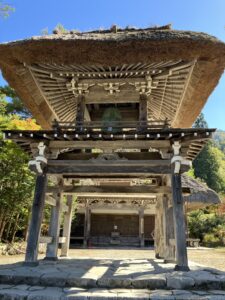Ogimachi (Shirakawago) | what to see, buy and eat

Ogimachi is the largest village in the World Heritage sites in Shirakawago and Gokayama.
Although the name “Shirakawago” can be seen in historical records in 13th century, it is not still clear when this village was established in this area. However, the gassho houses presumably said to be found in the late 17th century.
There are many shops, restaurants and museums. If you wish to enjoy those kind of things in the gassho-zukuri village, Ogimachi is a good place for you.
The express buses and a private car are the only ways to access to Ogimachi. From Toyama station, for example, it takes about 80 to 100 minutes from Toyama station by car.
General information of Ogimachi village
Ogimachi observatory is located on the top of the hill. You can take the shuttle bus which is available between 9:00 and 15:40 (return bus also)
If you wish to see the full scale of the village, you cannot miss Ogimachi Observatory.
Ogimachi Observatory & General information of the village
| General Information of Ogimachi World Heritage site | |
| Population | 1,600 |
| Number of Households | 500 |
| Village Area | 365.5km |
| Elevation | 500m |
| Non-thatched houses | 329 |
| Thatched houses | 114 |
| Inhabited gassho houses | 59 |
History of Shirakawago
| 13th century | Ikko sect spead to Shirakawago |
| 17th century | Shirakawago became under control of Tokugawa shogunate |
| 19th century | Sericulture industry flourished and the population increased in Shirakawago |
| 20th century | Gassho houses decreased as the construction of the dam began. |
| 1976 A.D. | Ogimachi was designated as one of the Preservation Districts for Important Traditional Buildings to put a stop to the decline in gassho houses. |
Things to note in Shirakawago
- Please do not enter private homes and gardens that are not open to public.
- Please refrain from smoking while you are walking. Gassho houses are vulnerable to fire.
- Please bring back your trash. There are no trash bins in Ogimachi village.
Characteristics of gassho house
The gassho house is characterized by its great functionality.
- steep roof
It allows the heavy snow to easily fall off so as to prevent the house from collapsing under the weight of the snow. - gables facing north and south
It faces north and south so as to allow sunlight to reach both sides of the roof and easily melt the snow. It can ensure good ventilation to bring the clean air inside. As a result, it removes CO2 generated by the roasting of the hearth. - no nails
The structure of gassho house does not use a single nail, but instead uses a method of combining pieces of wood and tying them together with ropes. Therefore, the gassho house can bend under the weight of snow, distributing the weight and passing it through. - hearth on 1st floor
When the inhabitant uses fire on the 1st floor, the warm air and smoke goes up to the 2nd floor, creating a suitable condition for sericulture; It has a strong effect to keep out harmful insects. Moreover, roasting makes ropes much stronger like wire as the soot melts on them.
Wada House
Wada House is one of the biggest gassho-houses which was owned by the ex-village chief, Masami Wada.
Focusing on the tourism value of Ogimachi, he established an ordinance to make the village designated as an Important Traditional Building Group Protection District of the country.
Moreover, he opened his house in public, which is nation’s Important Cultural Asset.
Eventually, Shirakawago became one of the largest tourist places in Japan, famed by the title as World Heritage.
Wada House 1st floor
There are a large room with tatami-matted floor and Buddhist alter.
This is the place for inviting relatives, neighbors and other locals to the Buddhist memorial event known as “ho’on koh”
This event is also meant to deepen the bonding of the community in order to cope with the nature difficulty.
Wada House 2nd floor
There was a workplace for sericulture.
Sericulture farmers feed on mulberry and raise silkworms to produce cocoons.
The inhabitant made living by selling the cocoons to silk mills.
The people of the household call the silkworms with the honorific title of ‘Okaiko-sama’ as a sign of gratitude for the silkworms that have supported the family’s livelihood.
Myozen-ji Temple

In the Edo period, Myozen-ji Temple functioned as town’s meeting place where you can listen to monk’s sermon.
Myozen-ji is one of the nationally rare temple because the structure is designed based on gassho-style.
The main hall was built by a renowned carpenter from Kokubun-ji temple in Takayama almost 260 years ago.
The frames were made from strong wood materials like Japanese cypress, which can stay strong and never rotten for a long time.
Inside of the temple, you can see many elegant sculptures and beautiful garden featured with mountaneous climate.
Shourou-mon gate is also one of the highlights in this temple. It was made by approximately 1,400 carpenters convened in throughout Hida region.

Shourou-mon gate is also installed with a thatched roof without exception here.
The bell was made by the alchemy artisan from Takaoka, Toyama prefecture.
As I introduced, Ogimachi is a good place to learn how the Japanese villegers lived in a difficult land as well as good landscape.
Hope you to enjoy the journey in this World Heritage site with gratitude.
Bye for now!



